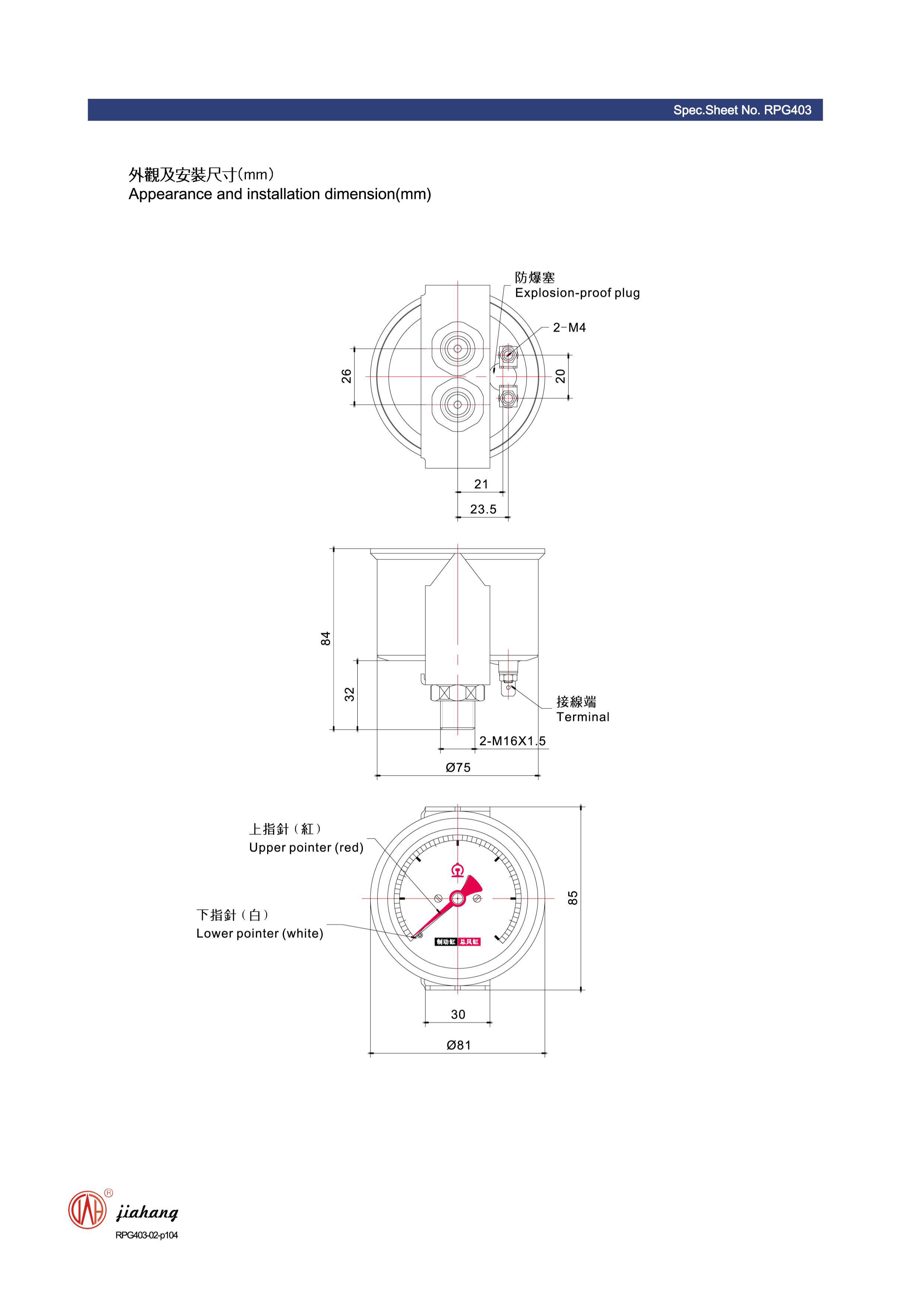
Nov . 04, 2024 16:38 Back to list
Diaphragm Pressure Sensor Element Pricing and Specifications Overview
Understanding Diaphragm Pressure Sensing Elements A Comprehensive Overview
Diaphragm pressure sensing elements are critical components used in various industries to measure pressure accurately. These devices operate based on the principle of a flexible diaphragm that deflects in response to pressure changes, providing a precise measurement of the force exerted by the fluid or gas. In this article, we will explore the functioning, application, and pricing aspects of diaphragm pressure sensing elements.
How Diaphragm Pressure Sensors Work
At the core of a diaphragm pressure sensing element is the diaphragm itself, typically made from materials such as stainless steel, polymers, or other alloys, which are selected based on the application's requirements. When pressure is applied to one side of the diaphragm, it deflects, causing a change in the position of a sensing element, generally a strain gauge or a capacitive sensor, attached to it. This deflection is then converted into an electrical signal proportional to the pressure applied, allowing for accurate measurements.
The design of the diaphragm plays a crucial role in determining the sensitivity and accuracy of the sensor. Multiple factors influence the effectiveness of a diaphragm pressure sensor, including the material's mechanical properties, the thickness of the diaphragm, and the configuration of the sensor itself. High-quality materials ensure durability and resistance to corrosion, making them suitable for harsh environments.
Applications of Diaphragm Pressure Sensors
Diaphragm pressure sensing elements are widely utilized across various sectors, including
1. Hydraulics and Pneumatics Monitoring fluid power systems to ensure stability and performance. 2. Oil and Gas Measuring pressures in exploration and extraction processes. 3. Medical Devices Sensing pressure in equipment like ventilators and infusion pumps. 4. Food and Beverage Ensuring compliance with safety standards by monitoring process pressures. 5. Automotive Used in applications ranging from tire pressure monitoring systems to fuel pressure management.
The versatility of diaphragm pressure sensors stems from their capability to measure both absolute and gauge pressure. This adaptability makes them invaluable in systems where pressure fluctuations are common and need to be precisely monitored.
Key Features to Consider
diaphragm pressure sensing element pricelist

When selecting a diaphragm pressure sensing element, it is essential to consider several key features, including
- Pressure Range The specifications of the sensor should match the operational range required for the application. - Accuracy The resolution and accuracy ratings determine the sensor's reliability in critical measurements. - Temperature Range The ability to function effectively across varying temperatures is vital, especially in industrial applications. - Output Signal Understanding whether the sensor provides analog or digital output is crucial for integration with existing systems.
Pricing Factors
The pricing of diaphragm pressure sensing elements can vary widely based on several factors
- Material Quality Sensors made from higher-grade materials that resist corrosion and wear will typically cost more. - Technology Type Advanced technologies, such as digital sensors with integrated electronics, tend to be more expensive than simpler models. - Calibration and Certification If a sensor requires specific calibration or conforms to industry standards, this can impact the price. - Volume Orders Bulk orders may result in significant savings, making it cost-effective for businesses that require multiple sensors.
Pricing typically reflects the complexity of the sensor and the precision required for its application. Buyers should take the time to evaluate their specific needs against the available sensor options to choose a solution that offers both accuracy and value.
Conclusion
Diaphragm pressure sensing elements are integral pieces of technology found in numerous applications spanning across various industries. From their fundamental operational principles to their diverse applications and pricing structures, these sensors prove vital for effective pressure management. As technology progresses, we can expect improvements in their design and functionality, further enhancing their role in ensuring safety, efficiency, and accuracy across sectors.
Investing in high-quality diaphragm pressure sensors not only guarantees reliability but also pays dividends in operational precision and safety compliance, making them essential for modern industrial applications.
-
High-Precision 5 Valve Manifold Differential Pressure Gauge Suppliers
NewsApr.29,2025
-
High-Precision Diaphragm Vacuum Pressure Gauges Manufacturers & Quotes
NewsApr.29,2025
-
Omega Differential Pressure Gauges High Accuracy & Durability
NewsApr.28,2025
-
Low Pressure Differential Pressure Gauges Precision Solutions & Quotes
NewsApr.28,2025
-
Digital Diaphragm Pressure Gaauge Precision Measurement & OEM Quotes
NewsApr.28,2025
-
Differential Pressure Gauge China Price High-Accuracy & Best Quotes
NewsApr.28,2025
